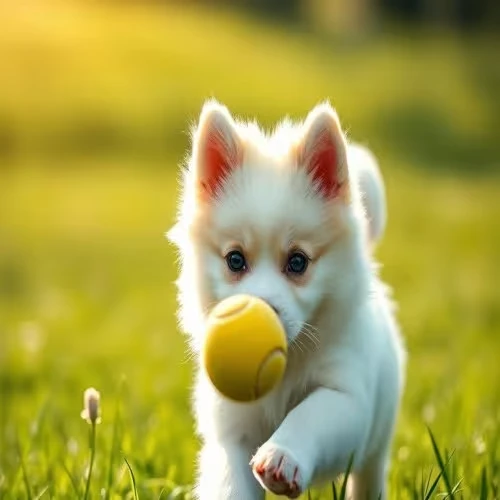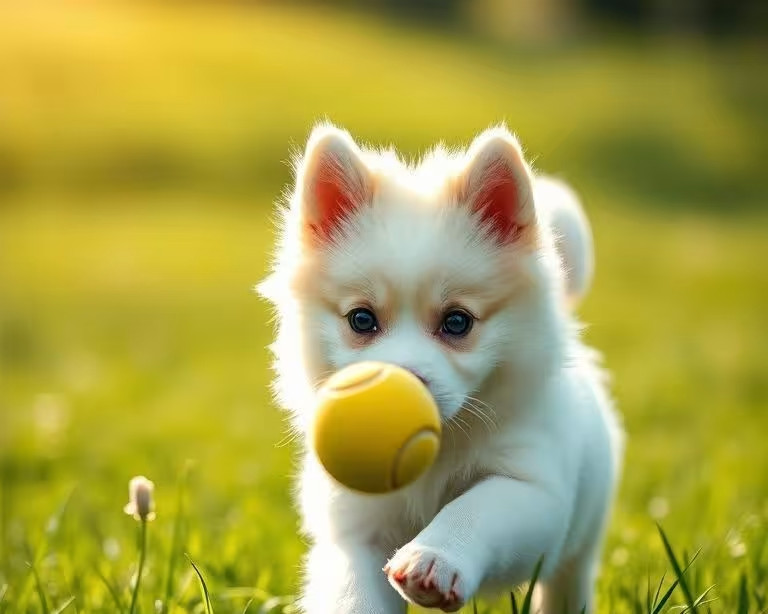The Ultimate Guide to Frozen Dog Treats: Keep Your Canine Engaged & Happy

As devoted dog owners, we constantly seek ways to enrich our furry companions' lives, ensuring they are not just healthy but also happy and mentally stimulated. While daily walks and playtime are essential, the quest for sustained engagement, especially when you're busy or when the weather is warm, often leads to innovative solutions. Enter frozen dog treats – a simple yet profoundly effective tool in your canine enrichment arsenal. These aren't just tasty snacks; they're powerful boredom busters, stress reducers, and a refreshing delight, offering a multifaceted approach to your dog's well-being. This comprehensive guide will delve deep into the world of frozen dog treats, equipping you with the knowledge to provide long-lasting enjoyment and cognitive challenge for your beloved pet.

Why Frozen Dog Treats Are a Game-Changer for Canine Enrichment
Understanding the 'why' behind canine enrichment is the first step to truly appreciating the value of frozen treats. Dogs, regardless of breed or age, require both physical and mental stimulation to thrive. Without it, boredom can quickly set in, manifesting in undesirable behaviors.
Understanding Canine Boredom and Its Impact
Boredom in dogs isn't just about a lack of activity; it's a fundamental lack of purpose. Dogs are naturally curious, intelligent, and often driven by instinctual behaviors like foraging, hunting, and problem-solving. When these needs go unmet, a dog may develop:
- Destructive Chewing: Furniture, shoes, or even walls can become targets for a bored dog.
- Excessive Barking or Whining: A desperate plea for attention or a release of pent-up energy.
- Digging: Often seen in yards, but can also occur indoors.
- Pacing and Restlessness: Signs of anxiety and an inability to settle.
- Anxiety and Depression: Chronic boredom can lead to emotional distress.
Frozen dog treats address these issues head-on by providing a sustained activity that engages both mind and body.
The Dual Benefits: Mental Stimulation and Physical Engagement
Unlike a quick biscuit, a frozen treat requires effort. Your dog must lick, gnaw, and work to get to the delicious core. This process offers a crucial blend of stimulation:
- Mental Challenge: Figuring out how to extract the treat activates problem-solving skills, mimicking natural foraging behaviors.
- Physical Workout: The extended licking and chewing motion is surprisingly tiring for a dog's jaw and tongue, contributing to physical satisfaction.
A Cool Solution for Hot Dogs: Hydration and Comfort
Beyond enrichment, frozen treats offer practical benefits, especially during warmer months. They provide a refreshing way to help cool down an overheated dog and contribute to their daily hydration intake, which is vital for overall health.
The Science Behind Long-Lasting Engagement: How Frozen Treats Work
The effectiveness of frozen treats isn't just anecdotal; it's rooted in canine psychology and physiology.
The Power of Licking and Chewing: Calming Instincts
Licking and chewing are innate, self-soothing behaviors for dogs. When a dog engages in repetitive licking, it releases endorphins, natural feel-good chemicals that promote a sense of calm and well-being. This is why frozen treats are often recommended for:
- Dogs with separation anxiety.
- Puppies during crate training.
- Dogs sensitive to loud noises (thunder, fireworks).
- Periods of confinement or recovery.
Prolonging the Pleasure: The Frozen Advantage
The frozen state of these treats is key to their effectiveness. It slows down consumption significantly compared to a dry treat. What might take seconds to devour when unfrozen can provide 20-60 minutes (or even longer, depending on the treat and dog) of focused, satisfying activity. This prolonged engagement is what truly combats boredom and promotes a relaxed state.

Top-Tier Tools for Delivering Frozen Fun: A Data-Driven Comparison
While the concept is simple, the vessels for delivering frozen treats vary widely. Choosing the right tool depends on your dog's chewing style, size, and the desired level of challenge. Here, we compare popular options, providing specific data points to help you make an informed decision.
KONG Classic & Extreme (Stuffable Rubber Toys)
The KONG is arguably the most iconic stuffable dog toy, renowned for its durability and versatility.
- Material: 100% natural, non-toxic rubber. The Classic is red, the Extreme is black (for power chewers), and there are softer options for puppies (blue/pink) and seniors (purple).
- Durability: High (Classic) to Very High (Extreme). Designed to withstand aggressive chewing while bouncing unpredictably.
- Design Features: Unique snowman-like shape with a hollow interior for stuffing. A small hole at the bottom allows for airflow and easier cleaning.
- Price Range: Typically $10-$25 depending on size (XS to XXL).
- Pros:
- Exceptional Durability: Especially the Extreme version, which can stand up to the strongest chewers.
- Mental Stimulation: The irregular bounce pattern makes fetch unpredictable, while the stuffing challenge keeps minds engaged.
- Versatile: Can be stuffed with a huge variety of foods and then frozen.
- Easy to Clean: Dishwasher safe (top rack recommended).
- Cons:
- Cleaning Nooks: The interior can be challenging to clean thoroughly if food is left to dry.
- Initial Learning Curve: Some dogs might need encouragement to figure out how to get the treats out.
West Paw Toppl & Qwizl (Stuffable Toys)
West Paw offers innovative and eco-friendly alternatives made from their proprietary Zogoflex material.
- Material: Zogoflex – a durable, non-toxic, recyclable, and buoyant material.
- Durability: High. Resilient and flexible, offering a different chew experience than KONG.
- Design Features: The Toppl is an open-ended cup-like toy with inner ridges, perfect for smearing and freezing. Multiple Toppl sizes can interlock for increased difficulty. The Qwizl is a treat-holding stick with side openings.
- Price Range: $15-$35 depending on size and model.
- Pros:
- Eco-Friendly: Made from recyclable materials.
- Easy to Clean: Wide opening of Toppl makes cleaning a breeze; dishwasher safe.
- Buoyant: Great for water play.
- Variety of Challenges: Toppl can be used by itself or interlocked for a harder challenge.
- Cons:
- Less Challenging for Aggressive Chewers: While durable, some determined chewers might work through a Toppl faster than an Extreme KONG.
- Higher Price Point: Generally more expensive than KONG toys.
LickiMat & Aquapaw Slow Feeder Mats
Lick mats leverage the calming power of licking by providing a textured surface to spread soft treats.
- Material: Food-grade silicone or natural rubber.
- Durability: Medium. Not designed for chewing; should be used under supervision, especially with chewers.
- Design Features: Various textures (nubs, grooves, labyrinths) to hold spreadable foods. Some come with suction cups.
- Price Range: $8-$25 depending on size and brand.
- Pros:
- Exceptional Calming Effect: Excellent for anxiety, grooming, or vet visits.
- Easy to Use: Just spread, freeze, and serve.
- Versatile: Can be used with purees, yogurt, wet food, and more.
- Easy to Clean: Most are dishwasher safe or hand wash easily.
- Cons:
- Not Chew-Proof: Can be destroyed quickly if a dog decides to chew instead of lick.
- Shorter Engagement: May only last 10-30 minutes, less than a well-stuffed KONG.
DIY Ice Cube Trays & Silicone Molds
For the budget-conscious or creative owner, simple kitchen tools can become excellent frozen treat dispensers.
- Material: Food-grade plastic or silicone.
- Durability: Low (plastic trays, not meant for chewing) to High (sturdy silicone molds).
- Design Features: Come in endless shapes and sizes, from standard cubes to paw prints and bones.
- Price Range: $5-$15.
- Pros:
- Cost-Effective: Inexpensive and often already on hand.
- Endless Customization: Create any shape, size, and ingredient combination.
- Portion Control: Ideal for small, bite-sized frozen snacks.
- Easy Cleanup: Most are dishwasher safe.
- Cons:
- Not a Chewing Toy: Treats are eaten quickly; the tray itself is not for chewing.
- Short-Lived: Offers less sustained engagement than stuffable toys.
Crafting the Perfect Frozen Treat: Recipes & Ingredient Safety
The beauty of homemade frozen treats lies in your control over the ingredients, ensuring they are safe, healthy, and tailored to your dog's preferences and dietary needs.
Safe and Nutritious Ingredients for Your Frozen Creations
Always prioritize fresh, whole ingredients and avoid anything harmful. Here are some excellent choices:
- Plain, Unsweetened Yogurt: A great source of probiotics for gut health. Ensure it's xylitol-free (toxic to dogs) and free from artificial sweeteners.
- Natural Peanut Butter: An all-time favorite. Again, CRITICALLY IMPORTANT: ensure it contains NO XYLITOL. Look for brands with only peanuts (and maybe salt) as ingredients.
- Fruits:
- Bananas: Rich in potassium and vitamins.
- Berries: Blueberries, raspberries, strawberries are packed with antioxidants.
- Apples: Good source of fiber and vitamins. Always remove seeds and core, which contain cyanide.
- Watermelon: Refreshing and hydrating. Remove seeds and rind.
- Vegetables:
- Pumpkin Puree: Plain, unsweetened (not pie filling!). Excellent for digestion.
- Carrots: Good for dental health and vision.
- Green Beans: Low calorie and crunchy.
- Sweet Potatoes: Cooked and mashed, a great source of fiber and vitamins.
- Broths: Low-sodium chicken, beef, or bone broth (homemade is best to control sodium and ingredients).
- Wet Dog Food: Your dog's regular wet food can be a fantastic and easy frozen treat base.
- Goat Milk: A nutritious, easily digestible option for many dogs, especially those sensitive to cow's milk.
Frozen Kong Recipes for Busy Pups
These recipes are designed for stuffable toys like KONGs, offering extended engagement:
- The Classic PB&Y: Layer plain yogurt, then a spoonful of xylitol-free peanut butter, then more yogurt. Freeze for at least 4 hours.
- Fruity & Crunchy: Mash a banana with a few blueberries. Stuff into the KONG, then add a few small carrot sticks or a piece of a healthy dental chew at the opening for extra challenge. Freeze.
- Savory Supper: Mix your dog's wet food with a bit of low-sodium broth or pumpkin puree. Stuff firmly into the KONG. Freeze overnight.
- Layered Delight: Alternate layers of pumpkin puree, plain yogurt, and mashed sweet potato. Freeze each layer for 30 minutes before adding the next for distinct layers.
DIY Frozen Lick Mat Spreads
Lick mats are perfect for thinner, spreadable mixtures:
- Simple Puree: Spread a thin layer of plain pumpkin puree or mashed banana across the mat. Freeze.
- Yogurt & Berry Swirl: Mix plain yogurt with a few mashed berries and spread evenly. Freeze.
- Peanut Butter & Broth: Mix xylitol-free peanut butter with a little low-sodium broth to make a spreadable paste. Spread and freeze.
Healthy Frozen Bite-Sized Treats
Use ice cube trays or silicone molds for quick, portion-controlled rewards:
- Broth Cubes: Simply pour low-sodium broth into ice cube trays and freeze. Great for hydration and a quick, savory treat.
- Fruity Bites: Blend a banana with some plain yogurt and a handful of spinach. Pour into molds and freeze.
- Pumpkin & Carrot Paws: Blend pumpkin puree with finely grated carrots and a splash of water or broth. Freeze in paw-shaped molds.
Ingredients to ALWAYS Avoid
To ensure your dog's safety, always be vigilant about ingredients:
- Xylitol: Extremely toxic, even in small amounts. Found in many sugar-free products (peanut butter, gum, candy, some medications).
- Grapes & Raisins: Highly toxic, can cause kidney failure.
- Onions, Garlic, Chives: Can cause red blood cell damage.
- Chocolate & Caffeine: Toxic stimulants.
- Avocado: Contains Persin, which can be toxic to dogs in large amounts.
- Alcohol: Highly toxic.
- Cooked Bones: Can splinter and cause internal damage.
- Excessive Salt or Sugar: Harmful in large quantities.
- Nutmeg: Can cause tremors and seizures.
Integrating Frozen Treats into Your Dog's Daily Routine for Optimal Well-being
Frozen treats are most effective when thoughtfully integrated into your dog's overall enrichment plan.
When to Offer Frozen Treats: Separation Anxiety, Crate Training, Hot Weather
Frozen treats are particularly beneficial in specific scenarios:
- Managing Separation Anxiety: Offer a stuffed, frozen KONG just before you leave to create a positive association with your departure and keep them busy.
- Crate Training: Makes the crate a more appealing and positive space.
- Hot Weather: A delicious way to help your dog cool down and stay hydrated.
- Managing High Energy: Provides a focused activity when you need a moment of quiet or during times of high excitement.
- Post-Surgery/Restricted Activity: Keeps minds active when physical activity is limited.
- Teething Puppies: The cold sensation can soothe sore gums.
Portion Control and Dietary Considerations
Remember that frozen treats, while healthy, add to your dog's daily calorie intake. Adjust their regular meal portions accordingly to prevent overfeeding and weight gain. Consult your vet if your dog has specific dietary restrictions or allergies.
Monitoring Your Dog's Engagement and Preferences
Pay attention to what your dog enjoys most. Do they prefer a simple broth cube or a complex, multi-layered KONG? Do they enjoy licking mats more than chew toys? Experiment with different ingredients and delivery methods to discover their favorites. Observe their behavior – are they calm and engaged, or do they lose interest quickly? This feedback will help you refine your treat-making strategy.
Beyond Frozen Treats: A Holistic Approach to Canine Engagement
While frozen treats are excellent, they are just one piece of the puzzle. A truly enriched life for your dog involves a diverse range of activities.
Combining Frozen Treats with Physical & Mental Enrichment
Integrate frozen treats with other forms of enrichment:
- Structured Walks: Vary routes, allow sniffing opportunities (scent work), and incorporate obedience commands.
- Puzzle Toys: Beyond stuffable toys, use interactive feeders and treat-dispensing gadgets to challenge their minds.
- Training Games: Teach new tricks, practice advanced obedience, or engage in scent games like 'find it'.
- Agility Courses: If suitable for your dog's breed and physical condition, agility training provides immense physical and mental benefits.

The Role of Social Interaction in Preventing Boredom
Dogs are social animals. Regular, positive interaction with other dogs and humans is crucial for their mental health:
- Playdates: Supervised play with compatible dogs.
- Doggy Daycare: A great option for working owners to ensure socialization and exercise.
- Quality Time with You: Regular cuddles, petting, and one-on-one play strengthen your bond and fulfill their social needs.
Addressing Common Questions About Frozen Dog Treats (FAQ Section)
How long do frozen dog treats last?
Once made, most homemade frozen treats will last for 2-4 weeks in the freezer in an airtight container. Once given to your dog, the treat's longevity depends on the dog's chewing style and the treat's density, ranging from 10 minutes for a simple ice cube to an hour or more for a densely packed, frozen KONG.
Are frozen treats safe for puppies?
Yes, frozen treats can be very beneficial for puppies, especially during teething. The cold can help soothe sore gums. Ensure ingredients are puppy-safe (e.g., plain yogurt, mashed banana, puppy-specific wet food) and that the treats are appropriately sized for their small mouths. Always supervise young puppies with new treats.
Can my dog get brain freeze from frozen treats?
While dogs can experience a similar sensation to 'brain freeze,' it's generally not harmful. If your dog consumes a frozen treat too quickly and experiences discomfort, they may stop for a moment. This is usually self-regulating. Encouraging them to lick rather than gulp can help prevent this.
What if my dog doesn't like frozen treats?
Not all dogs take to frozen treats immediately. Start with less dense options or slightly thawed treats. Try different flavors and textures. Some dogs might prefer a specific type of container (e.g., a lick mat over a KONG). Persistence and variety are key. You can also try making the treat less frozen initially.
How often can I give my dog frozen treats?
This depends on the treat's calorie content and your dog's overall diet and activity level. Generally, a small, low-calorie frozen treat (like a broth cube) can be given daily. Larger, higher-calorie treats should be given less frequently, perhaps 2-3 times a week, ensuring you adjust their main meal portions accordingly. Always consider treats as part of their total caloric intake.
Can frozen treats help with teething?
Absolutely! The cold temperature of frozen treats provides immense relief for a puppy's sore, inflamed gums during teething. Safe options like frozen banana slices, yogurt drops, or a frozen, wet washcloth can be very soothing. Ensure the treats aren't too hard to avoid damaging developing teeth.
Conclusion
Frozen dog treats are more than just a momentary distraction; they are a powerful tool for fostering a dog's physical and mental well-being. By engaging their natural instincts to lick and chew, these treats provide sustained mental stimulation, alleviate boredom, reduce anxiety, and offer a refreshing cooldown. Armed with knowledge about the best tools, safest ingredients, and creative recipes, you can unlock a world of long-lasting, enriching fun for your canine companion. Embrace the chill, and watch your dog thrive with a happy, engaged mind and a content heart.

 By
By
I always thought frozen treats were just glorified ice cubes, but this article really explained the depth of their enrichment value. The point about them being 'boredom busters' and 'stress reducers' and not just 'refreshers' is a huge difference and completely changed my perspective!